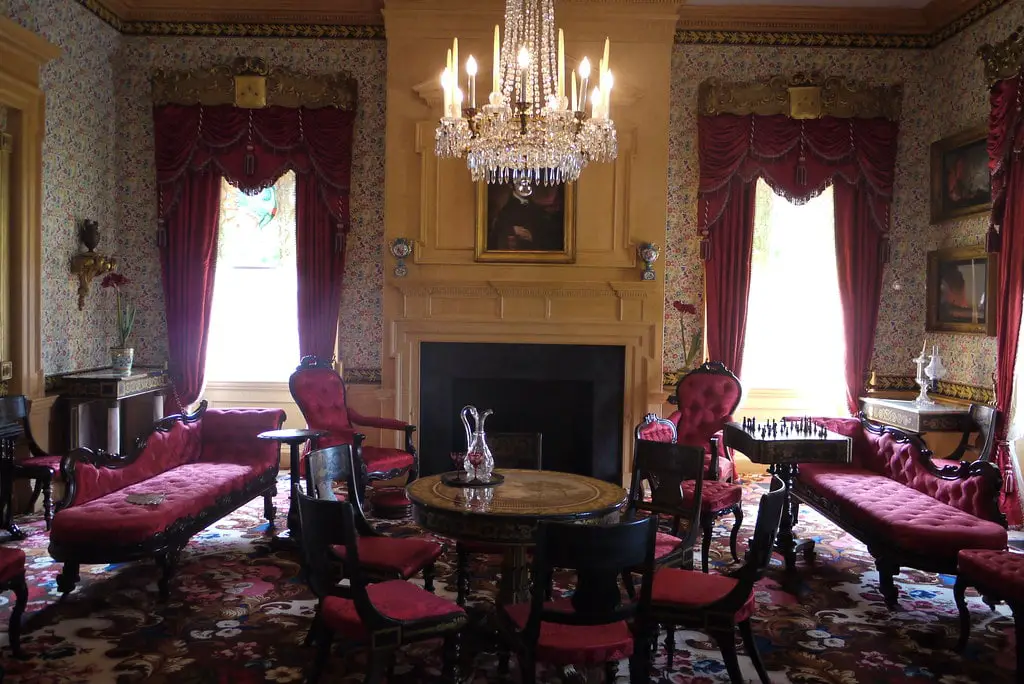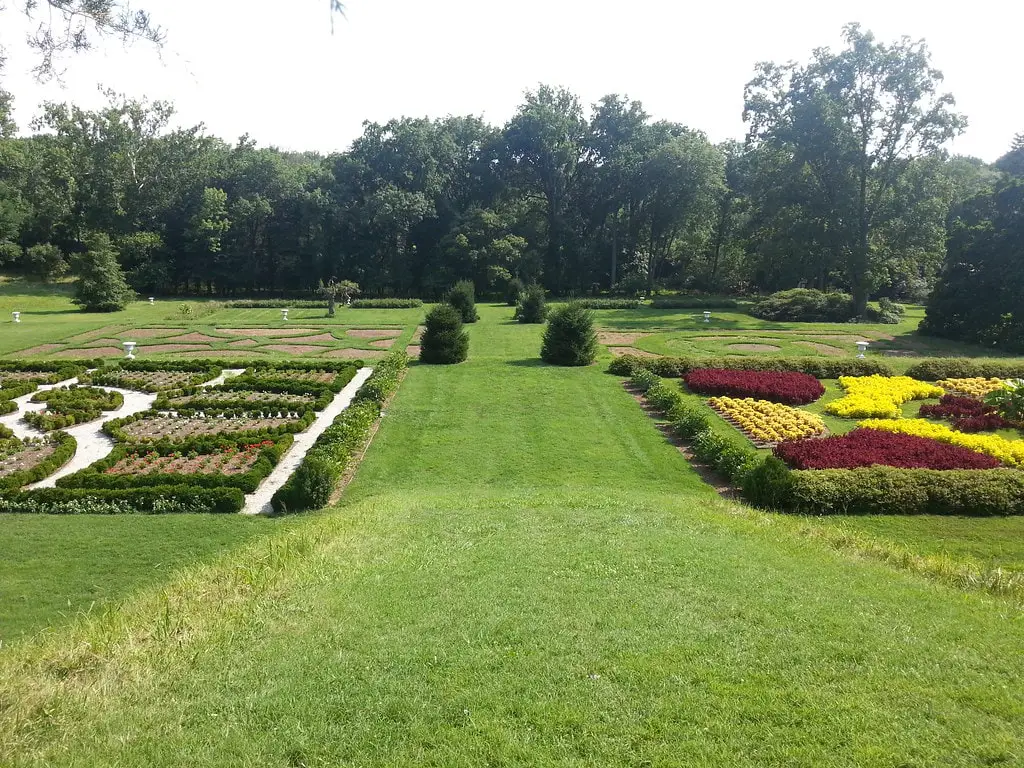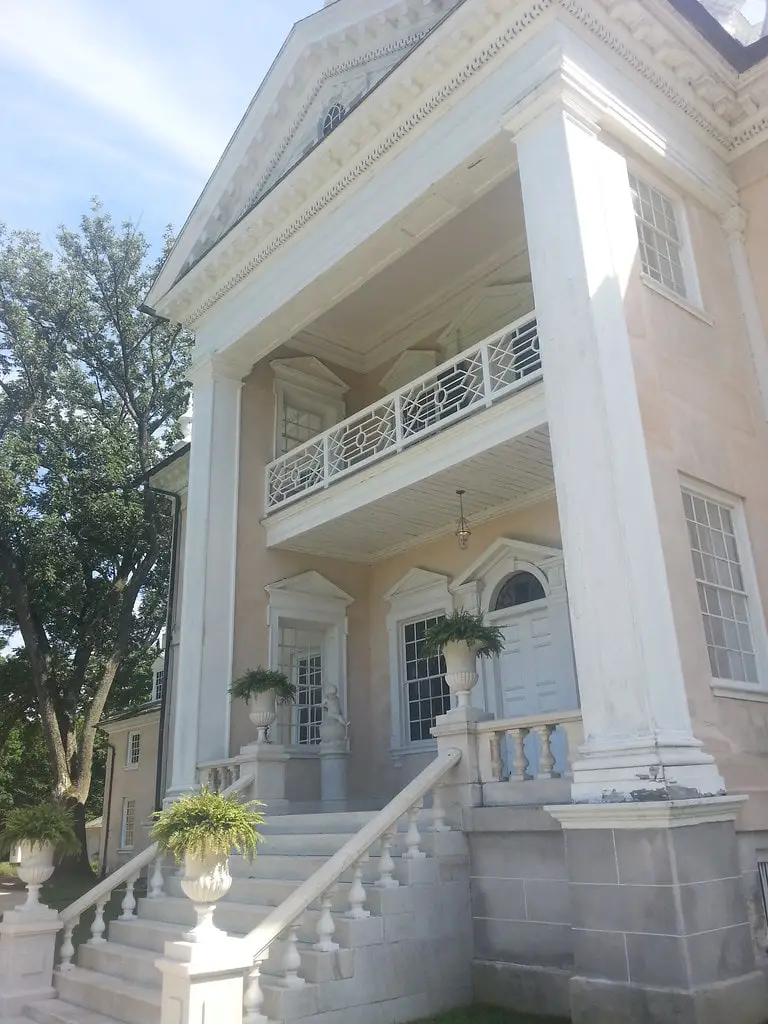The Historical Overview
Nestled near Towson, Maryland, Hampton Mansion is a testament to the intricate tapestry of American history. Built around 1790, this grand edifice was once possibly the largest private home in America. The mansion’s construction was spearheaded by the Ridgely family, who were prominent figures in Maryland’s social and economic landscape.
The Ridgelys’ influence extended far beyond the mansion’s walls, shaping the lives of those who lived and worked on the estate. The family’s affluence came from diverse sources, including agriculture, iron production, and wise investments.
But the Ridgelys didn’t build this empire alone. The estate was a hive of activity, buzzing with the labor of various workers. Enslaved African Americans, European indentured servants, and paid laborers contributed to the estate’s operations. Each group had its unique experience, but all were integral to the estate’s success.
The mansion and its surrounding estate have evolved over the years, reflecting the changing tides of American history. From its inception, Hampton has been more than just a building; it’s a living narrative shaped by the actions and experiences of its inhabitants.
Architectural Significance
Hampton Mansion is a marvel of late Georgian architecture. Its grandeur is evident in its intricate designs, which include detailed woodwork and elaborate interior decorations. The mansion’s architectural style was considered avant-garde, setting it apart from other estates of the era.
Over the years, the mansion has undergone several renovations to preserve its historical integrity. These efforts have been meticulous, maintaining the original design while incorporating modern amenities. The result is a seamless blend of past and present, where each room tells a story.
The mansion’s architecture is not just about aesthetics; it reflects the cultural and social norms of the time. The arrangement of the spaces, the selection of building materials, and the variety of furnishings all glimpse the daily lives of those who once resided here.
Today, the mansion is a well-preserved example of late Georgian architecture, attracting scholars and enthusiasts alike. Its design continues to be studied and admired, serving as an architectural benchmark for historical estates nationwide.
The Role of Enslaved People
The history of Hampton Mansion is incomplete without acknowledging the enslaved people who lived and worked there. Their contributions ranged from construction to maintenance, and their labor was instrumental in sustaining the estate’s operations.
In recent years, a multi-year Ethnographic Overview and Assessment was conducted, resulting in a collection of eight essays. These works delve into the lives of the enslaved, offering a more nuanced understanding of their experiences and contributions to the estate.

One of the most significant events in the estate’s history was the manumission of enslaved people by the second owner of Hampton. This act was one of the largest manumissions in the history of Maryland. However, it’s important to note that this did not mark the end of slavery at Hampton. Subsequent owners continued to employ enslaved labor, albeit in reduced numbers.
The legacy of enslaved people at Hampton is complex and multi-faceted. While they were subjected to the harsh realities of bondage, their labor and skills were instrumental in building and maintaining the estate. Their contributions are integral to Hampton’s history and should not be overlooked.
Hampton Mansion During Wars
Hampton Mansion has seen its share of conflict, most notably during the War of 1812. The estate’s Northampton Iron Furnace played a significant role in the war effort, producing iron, cannons, shot, and camp equipment. The foundry’s primary workforce consisted of enslaved African Americans skilled in various iron production aspects.
Charles Carnan Ridgely, the ironmaster and owner of the estate at the time, also significantly contributed to Baltimore’s defense in 1814. His efforts were not just financial; he also provided other supplies and resources, demonstrating the estate’s strategic importance during the conflict.

The war left an indelible mark on the estate and its inhabitants. The demand for iron surged, leading to increased production at the Northampton Iron Furnace. This, in turn, had social and economic implications, affecting the lives of the Ridgelys and the enslaved workers.
Today, the mansion serves as a reminder of the estate’s role in American military history. Its past residents’ free and enslaved contributions are commemorated through various exhibits and educational programs, ensuring their stories are not forgotten.
Hampton Mansion Today
Fast forward to 2023, and Hampton Mansion continues to be a hub of activity. The estate offers a range of ranger programs and mansion tours, allowing visitors to experience over 150 years of history. These activities are not just educational; they’re a journey through time, offering a glimpse into the lives of those who once called Hampton home.
Recent data shows that interest in national parks, including Hampton, is rising. In 2021, visitors to Maryland’s national parks spent a staggering $246.6 million in the state. This influx of visitors has positively impacted the local economy, benefiting businesses and communities alike.

Photography enthusiasts will find Hampton to be a treasure trove of opportunities. The estate’s photography policy encourages visitors to capture its beauty, albeit within specific guidelines. There’s no shortage of picturesque spots, from its majestic architecture to its lush gardens.
Various volunteer opportunities are available for those looking to contribute to the estate’s preservation. Volunteers, from guided tours to maintenance assistance, are crucial in keeping Hampton’s legacy alive. The work they put in guarantees that the property remains a wellspring of knowledge and motivation for the generations to come.
Planning Your Visit
So, you’re thinking about visiting Hampton Mansion? Great choice! Before you go, there are a few things you should know. First, be sure to check the operating hours and any applicable fees. This information is readily available on the estate’s official website and will help you plan your visit more effectively.
Photography is allowed, but some restrictions exist, especially for commercial photography. Ensure you familiarize yourself with the guidelines to avoid hiccups during your visit. After all, you’ll want to capture the beauty of Hampton without any interruptions.

The estate’s website offers various trip ideas if you’re looking for inspiration. These curated itineraries provide suggestions on making the most of your visit, covering everything from historical tours to scenic walks. Each trip idea is designed to offer a unique experience, catering to different interests and preferences.
Lastly, if you’re passionate about history and culture, consider volunteering. The estate is always looking for enthusiastic individuals to join their team. Volunteering is not just a way to give back; it’s an opportunity to become a part of Hampton’s rich history.
Conclusion
Hampton Mansion is more than just a historical site; it’s a living, breathing entity that continues to evolve. Its walls have witnessed the ebb and flow of American history, serving as both a sanctuary and a stage. From its architectural grandeur to its complex social fabric, Hampton offers a nuanced and multi-faceted narrative that invites exploration.

The estate beckons with the promise of discovery for those who have yet to visit. And for those who have walked its halls and roamed its gardens, Hampton leaves an indelible impression, a timeless allure that calls for a return. In either case, the mansion is a testament to the enduring significance of history, a monument to the past that continues to inspire the present.
